Spanish Interwar Tanks & AFVs
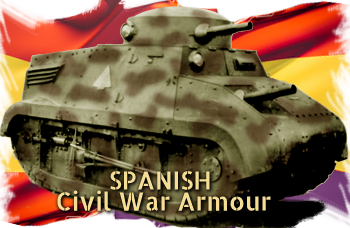
Tanks before the civil war, Republican and Nationalists, and Franco's WW2 Tanks
The story of Spanish Tanks goes back to the immediate post-WWI, with the need to secure its Moroccan colony against berber tribes, known as the Rif War (1921-26) in which French FT tanks as well as Schneiders are impressed into the very first armoured Operations of Spain. The interwar political troubles did not provided much occasions to expand this force, and apart the addotion of a few Fiat 3000A from Italy and the first domestic tank from 1925 called the "Trubia". In 1936 when the civil war broke out, the urgent need to possess armour pushed for the construcition of armoured cars, some serial, some locally improvized, both on the Republican and Nationalists camps. The former will eventually seek help from the USSR and reveived several types of Soviet types tanks and armoured cars, while the latter seek helped from the future axis, garnering mostly Italian Tankettes and German light Tanks while pushing for domestic designs such as the Verdeja.
After the war was won by Franco's Nationalists, Spain entered WW2 in a devastated state, staunchly remaining neutral, until by 1942 under pressure by the Reich, accepted to create the Legion Azul, which was provided by Germany in vehicles and tanks. Franco latter asked to Hitler to provide more capable Panzers, of the IV model and STUG-IIIs, obtained with parcimony by 1944 and 1945. They were still the bulk of the armoured forces with remaining T-26 tanks and other models, enough to create three brigades after reorganization. However what's next can be seen in Spanish Cold war tanks section.
Articles
Tanks
Modelo Trubia Serie APanzer I ‘Lanzallamas’
Panzer I Breda
Tractor Landesa
Trubia-Naval
Armored cars
AAC-1937Bilbao Modelo 1932
Constructora Field
Ferrol Armored Car
Hispano Suiza MC-36
UNL-35
Prototypes
Cañón Autopropulsado de 75/40mm VerdejaCarro de Combate de Infantería tipo 1937
Carro de Combate Ligero para Infanteria Modelo 1936
Fiat CV.33/35 ‘Breda’
Tanque Barbastro
Verdeja No. 1
Verdeja No. 2
Introduction – The Early Years (1919-1934)
Imports
Prior to 1934, Spain had a limited experience with tanks and armoured vehicles. The early years of Spanish tanks were mostly filled with small imports of the Renault FT (and a single TSF), and Schneider CA-1 from France. They would also receive one Fiat 3000A from Italy. Armored cars were equally as scarce, but various improvised armored cars were made for convoy duties at the Rif. The ubiquitous Renault FT played a major part in the first steps of the Iberian armored units.As early as 1918, Spain lobbied the French government for their purchase. After a long period of back-and-forth between the Spanish and French, a single FT armed with a machine gun was delivered in June, 1919. The French refused any further sales.During the Rif War, Spain lost the Battle of Annual on 22nd July, 1921. Another request was sent to the French for more tanks, and eventually 10 FTs and one TSF command tank was delivered to the army on January 12th, 1922. Six Schneider CA-1 tanks were also bought in September, 1921, which were sent to Morocco in February, 1922.
Most of these tanks were still in service by 1936, some of them first line, but most had been relegated to training duties. Ten FTs were still operational, along with six Schneider CA-1s. The Fiat 3000A was received in January, 1925, and was later upgraded with a 37mm gun – it was believed to have been cannibalized for parts at the outbreak of the Civil War.
Indigenous designs
Spain did not see any indigenous tank designs until 1925 with the Trubia, a mostly unsuccessful project that lasted until 1934.The Army chief of staff ordered the Landes Military Group to develop an autonomous combat tank. Initially, it was to be based on the Renault FT, although the main intention was to improve its performance and reliability – a lesson hard learned from the Rif. The prototype gave fairly encouraging results during tests in Carabanchel.
It was presented at the Gijon engineering Trade Fair of 1925. This model was built in Trubia (from where it got its name) and formed the design basis for future tanks. This was a project that lasted from 1925-1935.Later, a semi-armored (but unarmed) tractor was also developed in 1928 at the Trubia factory. The Landesa (as it was known – named after Major of the Artillery Victor Landesa Domenech) was a fairly uninspiring design, with one prototype finished in 1930, and upgrades taking until 1932 to complete.
Two were produced for testing with the army, and another nine were commissioned, with the intention tow AA guns. The Trubia factory also planned a fully armored version, two of which were produced in 1934, armed with a 7mm machine gun. The factory encountered trouble making the engines, and thus they were not ready for combat at the outbreak of the Spanish Civil War.
First combat
The Renault FTs were sent to Morocco in 1921 for the Rif War. On March 17th, 1922, they saw their first action. Unfortunately, many machine guns jammed, and two broke down – these later destroyed with dynamite by Rif forces.In 1923, six Schneider CA-1s were used to support the FTs, which all saw infrequent use until 1925. On 8th September, 1925, 6 CA-1s and 11 FTs were used to support the landing at Alhucemas in Morocco, leading to a major victory for the Spanish over the Riffians. Some improvised gun trucks were created at the Rif in order to keep convoys protected from skirmishers, such as the “Nash-Quad“.
The Spanish Second Republic (1931-1936)
Following the ousting of General Miguel Primo de Rivera’s dictatorship in 1930, radical Republicans eventually managed to gain power in 1931, forcing King Alfonso XIII to leave the country. A new Republic was declared on April 14th – the Second Spanish Republic. With this proclamation came an extremely controversial liberal constitution written by centrist and leftist radicals. Social, political, and economic tensions were already at breaking point at this time, but what made the nation so unstable and polarizing were the attempts by radical Republicans to force liberalism (by the centrists) and socialism (by the leftists) onto a traditionally deeply Catholic-conservative nation. This extremism on the part of the Republicans soon led to the rise of a reactionary right wing.Political Overview – 1931-1936
The Republic was characterized by several major factions, including two smaller regionalist factions:- The fairly moderate centrists (although they were considered fairly radical by previous standards of Spanish government) were some of the main players in the early Second Republic. For example, Alejandro Lerroux’s PRR (Radical Republican Party) was the second largest party after the 1931 election, winning 90 seats in the Cortes. Similarly, Niceto Alcalá-Zamora’s DLR (Liberal Republican Right – later PRP, Progressive Republican Party) was fairly significant.
Alcalá-Zamora would also be elected president in December, 1931. These moderates (to just name a few, that is) would find themselves in increasingly difficult positions, trying to head governments with true extremists on both sides of the political spectrum, but also steer the sinking ship that was the Second Republic through a sea of social and political unrest. The centrists would effectively become irrelevant at the outbreak of the Civil War, if not, certainly by 1937. - Leftists, Communists, Socialists, and Anarchists made up the bulk of the other Republicans, and Republican factions were usually in coalition for election time only – something to consider for when the Civil War breaks out. The PSOE (Spanish Socialist Workers’ Party) headed by Julián Besteiro, won the most seats (a total of 115) in the 1931 election. Other such Leftist groups included the PCE (Spanish Communist Party), POUM (Workers’ Party of Marxist Unification) and unions such as the UGT (General Workers Union), and anarcho-syndicalist CNT-FAI (National Confederation of Labor-Iberian Anarchist Federation). These groups were not united due to significant ideological differences. The various leftist factions were divided as much internally as they were with other non-left wing factions. This generally owed to their respective doctrines – for example, the Anarchist CNT-FAI would not even take part in democratic elections because such systems were ideologically unacceptable to them. Another example is that the PCE was usually subordinate to Moscow under Stalin, whereas POUM (formerly the ICE, Communist Left of Spain) was opposed to Stalin’s Communism, and generally favored Leon Trotsky. The use of the term “Republicans” during the Civil War should not denote serious ideological unity beyond fighting the Nationalists.
- The right wing was generally comprised of old guard Monarchists, Fascists, Catholics, Conservatives, and traditional elites of the higher estates in previous Spanish states. Although they did not make huge gains until the general election of 1933, they also did not identify as a united front until that time. Included in these groups are CEDA (Spanish Confederation of Autonomous Right-wing Groups, founded in 1933), Falange Española (also 1933), the Carlists (traditionalist monarchists), and broadly speaking, these groups had the support of Alfonsists (loyal to King Alfonso XIII), and the Catholic Church. These sectors of society, facing extreme repression from Republicans, were on the whole, more united, and come the Spanish Civil War, easily more powerful militarily speaking.
- The Republic also had two regionalist powers at play – Catalonian separatists and Basque nationalists. The Catalonian separatists certainly held more power in the Republic than the Basques, not least because Catalonia was a bastion of powerful leftist groups such as the CNT-FAI, ComIntern members, and various other major and minor Communist factions. An almost comically reductionist (but nevertheless fair) interpretation of the Basque position is that they simply wanted to be left alone by a centralized Spanish state.
Regionalism from the Basque Country and Catalonia was ever-increasing and straining the unity of the Spanish Second Republic. Regionalism (or perhaps factionalism divided down regional line, IE the infighting between Anarchists of Catalonia and Communists of Madrid) could be easily argued as one of the most significant reasons that the Republicans crumbled before the Nationalists in the Civil War. Whilst the Nationalists factions, as we will explore later, were divided, too, their divisions were scratches compared to the chasms that divided the Republican front.
These tensions between factions rose steadily throughout the period between because the elections in 1931 gave power to the Republican Front. This front excluded the Anarchists and some other Leftist factions. Socialist/Communist-led social, agrarian, and industrial reforms failed, and the Republic effectively failed on its promises of a modernized state by 1933, leading to great resentment from many elements of Spanish society – particularly the traditional right, but also the general population.
The failure of such promised rapid changes led to a landslide victory for a center-right coalition, which won power in the 1933 election. The Republicans and leftists refused to accept the result – but they had been beaten at their own game. The newly formed Catholic-Conservative party, CEDA, won 115 seats in the Cortes (Spanish parliament), followed by Lerroux’s centrist PRR, which won 102 seats. The PSOE of Francisco Largo Caballero had lost 56 seats (almost half of the seats won in 1931).
In the background, the Basque Nationalists won 12 of 17 available seats, and leftist groups in Catalonia reformed into the Esquerra Catalana (Catalan Left). The new government was a coalition led by PRR and joined by CEDA.The fallout of the 1933 election was significant on various levels. The military was purged of Republicans and was reformed – only those loyal to CEDA would receive any promotions. Farm workers’ wages were halved, and farming practices were still inefficient – a lingering result of Republican reforms which led to further resentment for the Republic. Worse still, there were no budgets passed under the CEDA – PRR, so Spain suffered greatly economically.
The arrival of CEDA into government also caused the Asturian Miners’ Strike of 1934, which was eventually crushed by none other than Francisco Franco, leaving 1700 miners dead, and anywhere between 15,000-30,000 arrested. As a result of the political and economic instability, in 1935, Manuel Azaña of the IR (Republican Left) and Indalecio Prieto of the PSOE began to organize leftist groups into the Popular Front (FP) in order to challenge the government.Fresh elections in early 1936 were called after Lerroux’s government collapsed as a result of CEDA’s withdrawal of support, and a huge governmental corruption scandal.
This fresh election saw the Republicans regain power through the Popular Front, but tensions had finally reached a breaking point within Spain.The Spanish Civil War broke out in July 1936 with parts of the Spanish military elite declaring their opposition to the Republic. Planning had taken place months earlier, with the hope of a swift overthrow of the unstable Republican government. A coup broke out in Morocco, and various cities across (mostly) southern Spain, but rebels failed to take many cities outside the south, especially the powerful cities of Catalonia and Madrid.
The Republicans were not fast enough to react, the army being fairly inactive and ineffective, and local militias being unwilling to act, too, because of a lack of arms. It took until September (two months after the coup) for the Republic to organize itself beyond under-armed militias as a result of various factions within the left wing still vying for power at this crucial time. Due to this, the right-wing rebels managed to take Seville, an important landing point for Francisco Franco’s troops, and rebels were able to make swift advances – one might easily argue that this was a key turning point in the history of Spain.
The Civil War Erupts
For the purposes of the war, Spain was divided thus – the “Republican” coalition, loyal to the elected government, counted the Socialist party (Popular Front), and factions like the PCE/POUM (Communists), CNT & FAI (Anarcho-syndicalists), and regional factions from the Basque Country and Catalonia wavered between local interests and the government. Opposing them was the “Nationalist” side, led by the rebel General Francisco Franco with the Carlists (Traditional Royalists), the CEDA (right wing), the Alfonsists (loyal to the king), and the Falange led by Franco, the Spanish Fascist party.Both sides found allies in Europe. The Republicans were unfortunate, as democratic nations like France and Great Britain remained neutral for the duration of the war (even despite French attempts to supply arms, they were bound by the non-intervention committee). The Nationalists had the full support (material and later with small manpower) of the fascists in Italy and Nazis in Germany .Spain eventually found itself geographically cut in two. Franco led the offensive from the south, transporting his seasoned African troops with planes offered by Nazi Germany, and trying to revive a “reconquista” in reverse.
Things went badly for the Republicans at first, mainly because of a lack of firepower, munitions, and logistics, which meant that local military forces (both militia and official army) were unable to mobilize and defend against advancing rebel forces. The defense largely seemed to be organized (to use the term loosely) using undrilled militias with archaic rifles, dynamite, and improvised gun trucks. The Republicans (whether militias or the official army) found its military might wanting.
The Soviet Union intervenes in 1937
The Soviet Union had a major interest in Spain before the Civil War even began. The possibility of securing a satellite state in Western Europe would be excellent for the Comintern. Communists in Spain had gained a foothold since the early 20th century, and knowing that the balance between traditional, Catholic Spain and modern, socialist Spain could be tipped one way or the other at any moment, the USSR attempted to influence the situation.As mentioned earlier, the Republicans desperately needed arms, as the Nationalists controlled half of available rifles, and two-thirds of the machine guns and artillery pieces, thus giving them the upper hand. Worse still, due to an agreement of non-intervention from France and Britain, the only viable option was to buy from the Soviet Union (although small shipments were secured from France, it was far from sufficient). By this time, the Soviets were less concerned about receiving a new satellite state as much as they were about stopping the spread of Fascism.
By spending some of its gold reserves to pay for the aid, it is estimated that Spain received 242 aircraft, 703 artillery pieces, 731 tanks, 300 armored cars, 15,000 machine guns, 500,000 rifles, and 30,000 sub-machine guns from both Soviet and Comintern sources, as well as over 2000 Soviet personnel, mainly consisting of pilots and tank crews, but also engineers and military advisers. Indeed, most, if not all, Soviet vehicles were crewed by Soviets.However, the Spanish were able to crew their own vehicles.
Militias had improvised armored vehicles, and the main military was given two series of armored cars, constructed with the help of Soviet advisors. These were the UNL-35, and the AAC-1937 (sometimes known as the Chevrolet 6×4). Both were made in Valencia in 1937, effectively near-copies of Soviet vehicles. The UNL-35 was a light armored car, armed with one or two machine guns (one hull, one turret), with an estimated 120-200 made. The AAC-1937 was a heavier 6×4 armored car, featuring a variety of different guns – most commonly, they had a hull MG of various models, and a 37mm gun and machine gun in the turret, although some models were fitted with salvaged Soviet turrets with 45mm guns. 70-90 of the type were made, with production slowing down towards 1939 due to a lack of resources.
Germany and Italy Join the Fight
During the Spanish Civil War (1936-1939), Germany, under the Nazi regime led by Adolf Hitler, intervened in support of General Francisco Franco's Nationalist forces. The German intervention took various forms: Military Support: Germany provided substantial military aid to Franco's Nationalist forces, including aircraft, tanks, artillery, and other equipment. The German Condor Legion, composed of air and ground units, played a significant role in assisting Franco's forces, particularly in strategic bombing campaigns against Republican-held cities like Guernica.Training and Advising: German military advisors and technicians were deployed to Spain to train Nationalist forces and advise them on military strategy and tactics. This assistance helped bolster the effectiveness of Franco's troops.
Ideological Alignment: The Nazi regime saw Franco's Nationalists as ideological allies against communism and perceived the Spanish Civil War as an opportunity to spread fascism in Europe. This ideological alignment further motivated Germany's support for Franco.
Testing Ground for Military Tactics: The Spanish Civil War served as a testing ground for Germany to experiment with new military tactics and technologies that would later be employed during World War II. For example, the bombing of Guernica allowed the Germans to refine their air warfare strategies.
Overall, Germany's intervention in the Spanish Civil War played a significant role in ensuring Franco's victory and establishing a fascist dictatorship in Spain that would endure for decades.
Italy, under the fascist regime of Benito Mussolini, also intervened in the Spanish Civil War on the side of General Francisco Franco's Nationalist forces. The Italian intervention took several forms:
Military Support: Italy provided significant military assistance to Franco's Nationalists, including troops, aircraft, tanks, artillery, and other equipment. The Italian Fascist regime sent thousands of soldiers to Spain to fight alongside Franco's forces.
Italian Expeditionary Force: Mussolini dispatched the Corpo Truppe Volontarie (CTV), or Volunteer Army, to support Franco. The CTV played a crucial role in several key battles during the conflict, including the Battle of Guadalajara.
Naval Support: Italy also provided naval support to Franco's forces, including warships and submarines. This assistance helped blockade Republican-held ports and cut off their access to vital supplies.
Ideological Alignment: Like Nazi Germany, Mussolini's Italy saw Franco's Nationalists as ideological allies in the fight against communism and viewed the Spanish Civil War as an opportunity to expand fascist influence in Europe.
Geopolitical Objectives: Italy's intervention in the Spanish Civil War was also driven by its desire to establish a foothold in the Mediterranean and exert influence in Spain and the broader region.
Overall, Italy's intervention in the Spanish Civil War bolstered Franco's Nationalist forces and played a significant role in their eventual victory over the Republican side. It also demonstrated Italy's alignment with Nazi Germany and its commitment to expanding fascist influence in Europe.
Military Operations 1936-1939, an Overview
The Spanish Civil War (1936-1939) saw numerous military operations carried out by both sides, the Nationalists led by General Francisco Franco and the Republicans, a coalition of leftist and Republican factions. Here are some key operations from both sides during the conflict:Nationalist Operations:
Capture of Major Cities: The Nationalists launched offensives to capture key cities held by the Republicans. This included the Siege of Madrid, where Franco's forces attempted to take control of the capital city, though they faced fierce resistance.Northern Campaign: The Nationalists launched a campaign in northern Spain, aiming to cut off Republican territory and secure control over strategic areas such as the Basque Country and Asturias. The Battle of Santander and the Fall of Bilbao were significant engagements in this campaign.
Aragon Offensive: Franco's forces launched a major offensive in the region of Aragon, aiming to secure control over northeastern Spain. This offensive resulted in the Nationalists gaining significant territory, including the important city of Teruel.
Ebro Offensive: The Nationalists launched a large-scale offensive along the Ebro River, one of the final Republican-held areas. This offensive, known as the Battle of the Ebro, aimed to divide Republican territory and advance towards Catalonia, ultimately leading to Republican defeat in this region.
Republican Operations:
Defense of Madrid: The Republicans launched counteroffensives to defend the capital city of Madrid from Nationalist assaults. The Battle of Madrid was one of the most significant engagements of the war, with intense fighting in and around the city.Battle of the Jarama: The Republicans launched an offensive along the Jarama River to try to halt the Nationalist advance towards Madrid. Although the Republicans made initial gains, they were ultimately unable to achieve a decisive victory.
Defensive Operations: As the war progressed, the Republicans focused increasingly on defensive operations, attempting to hold onto their territory against Nationalist offensives. This included efforts to fortify key positions and repel Nationalist attacks.
Failed Offensives: The Republicans also launched several offensives aimed at regaining lost territory or breaking through Nationalist lines. However, many of these offensives, such as the Battle of Teruel, ended in failure and heavy casualties for the Republican forces.
These operations represent just a selection of the many military campaigns and battles that took place during the Spanish Civil War, which ultimately ended in victory for Franco's Nationalists and the establishment of a fascist dictatorship in Spain.
The Division “Azul” in Operations (1941-45)
Although Spain was exhausted and neutral, Franco was convinced by Hitler to participate in the “crusade against the Bolshevism”. Since Germany had the industrial muscle but needed manpower, an entire division of volunteers and career officers was integrated into the German high command organization and entirely German-equipped, from uniforms to tanks.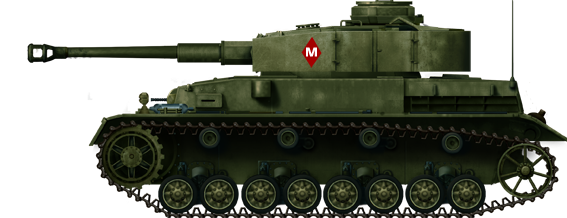
Spanish Panzer IVH in 1948.
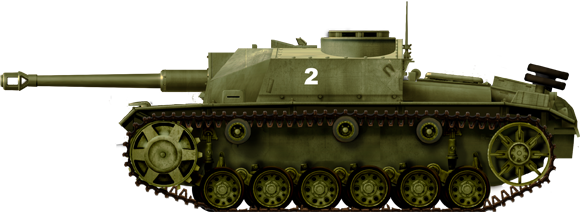
Spanish STUG-IIIG in 1952.
Tanks of the Rif War
 Renault FT and TSF
Renault FT and TSF
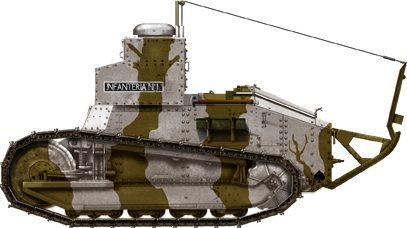
Spanish TSF tank, in Morocco.
Spain was interested in purchasing FTs from France as early as 1918. Between 1919 and 1923, Spain would receive 11 FTs and 1 TSF command tank. At the outbreak of the Civil War, 10 FTs were in service – 5 were in service with the Nationalists at Sevilla, and 5 were in service with the Republicans in Madrid. The fate of the TSF is unknown – it was likely out of service at that time. Poland and France also sold Spain 65 additional FT tanks during the course of the Civil War.
 Schneider CA-1
Schneider CA-1
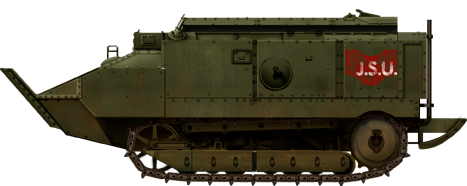
6 surplus Schneider CA-1 tanks were purchased on September 16, 1921, to form an armored battery. These would take part in the Rif War in support of FT tanks. The CA-1 was used for training purposes after the Rif War, but were pulled into service for the Civil War with the Republicans and saw fighting at Madrid and Toledo.
Schneider CA-1 of the JSU (Juventudes Socialistas Unificadas), Toledo, September, 1936.
 Trubia M1925 and A4
Trubia M1925 and A4
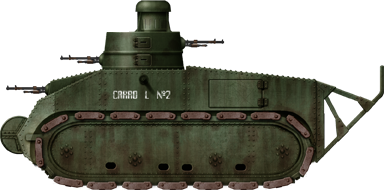
Trubia modelo A4, prototype n°2, without mudguards. It was attached to the Infantry Regiment Milan 32, which later took part in the defense of Oviedo. The “L” stood for Legero (light).
Bilbao armored car
Built in series at Bilbao, used mainly by the police. 4 crew, 5 soldiers. One MG turret. Speed 50 km/h (31 mph). The Trubia Project included various prototypes of the Trubia design. The Trubia M1925 was the first indigenous Spanish tank, but it was a mere prototype. The main design feature was the turret, which was sectioned off into lower and upper sections. Each section had a Hotchkiss machine gun, and could be independently aimed. After successful testing of this prototype, development was given the green light.A second prototype was designed with new features, including an enlarged hull, a hull machine gun, new tracks, bigger engine.Commonly referred to as the Trubia A4, the first prototype was made in 1926, with three or four more ordered. It took until 1934 to have all four complete. The original prototype was sent back the factory in 1935 for upgrades. Several tanks were issued to, and tested by the Milan Infantry Regiment, which would later be turned over to the Nationalists in the early Civil War. The first prototype was still at the Trubia factory by the outbreak of war, and was given to the Republicans.
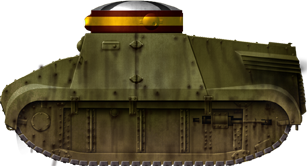
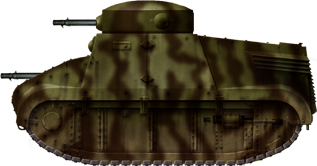
 Hispano Suiza MC-36
Hispano Suiza MC-36
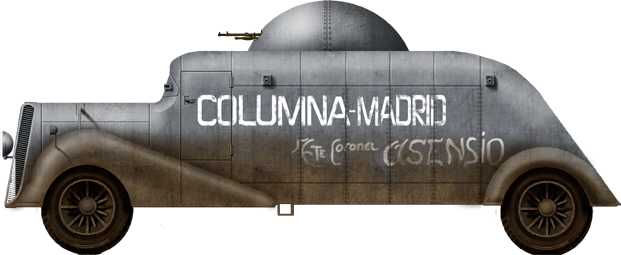
Rendition of the original Hispano Suiza MC-36 model featuring the ‘Hotchkiss hemispheric turret’. Nationalist service. Slogan: “Columna Madrid Tte. Coronel Asensio”.
Built in competition with the Bilbao as a policing vehicle. It was based on a large Hispano Suiza truck chassis. It lost out on the contract to the smaller Bilbao, but saw limited production run of 5-15. It would later be thrown into the furnace of the Civil War, with some captured by the Nationalists. Most photographs show Nationalist service, as they were captured early on in the war. One was also given a T-26 turret in Nationalist service and was the command vehicle for A grupacion de Carros del Sur. Used postwar, too.
Civil War Tanks and Armored Cars
 Trubia Naval/Trubia Modelo 1936/Tanque Euskadi
Trubia Naval/Trubia Modelo 1936/Tanque Euskadi

A camouflaged Trubia Naval of the Republican forces in the Basque country, 1936.
 T-26
T-26
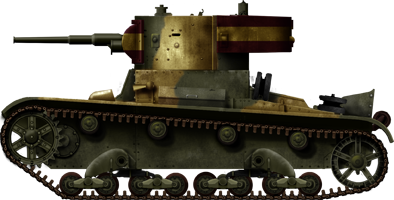
T-26 M1933 (in reality produced in 1936) T-26 of the Nationalist forces, Battle of Guadalajara, March 1937.
 BT-5
BT-5
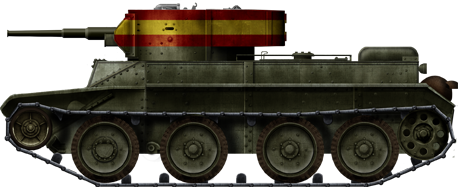
A BT-5 M1933 from the Spanish Nationalist forces, circa 1938. The turret roof was painted white with a large black cross for aerial identification.
 Sadurni de Noya
Sadurni de Noya
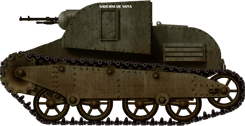
The official designation was Carro IGC Sadurni, from the Industria de Guerra Cataluña. It was planned in 1937 and the first prototype was completed in 1937. Unknown number built. In 1937, the Commission of the military industry (Comision de Industrias de Guerra – IGC) reviewed a draft of armored tracked vehicles, and eventually commissioned “Maquinaria Moderna para Construcciones y Obras Publicas, SAE”, located in the Catalan town of San Sadurní de Noya. The project manager was Casanova, who used the multi-purpose Benach tractor as a basis.
Since the tractor chassis was marginally suitable for combat adaptation, many components and assemblies had to be developed from scratch.The chassis and hull were bolted. There was a fighting compartment and rear engine compartment. The drivetrain consisted of 4 double rubberized roadwheels, three return rollers, front idlers and rear tensioners. The gasoline engine was from SEFA (4-cylinder, 43 hp capacity), placed in the rear, while the transmission elements and steering were at the front. There was a superstructure with a sloping frontal armor plate, slightly protruding beyond the edges. The driver’s seat was on the left, while the co-driver was slightly offset to the middle.
Protection consisted of two layers of bulletproof steel. There was a single 7.5 mm (0.29 mm) Hotchkiss machine gun, in a ball mount, manned by the co-driver/commander. There was an unarmed transport tankette version, which could tow a trailer large enough for six men or a large payload. Their fate is unknown. However, one in the “combat” configuration was shown at a military parade in 1937, and a transport version was used by the CNT. These images clearly show that the CNT had at least three of these tanks. However, no valid information has been found on their operational life.
Known characteristics
- Combat weight: 4700 kg
- Crew: 2
- Dimensions: 2800 x 1560 x ? mm
- Armament: 7.5 mm (0.29 in) Hotchkiss M24 machine gun
- SEFA engine, gasoline, 4-cylinder, air-cooled, 43 hp power
 Landesa improvised tank
Landesa improvised tank
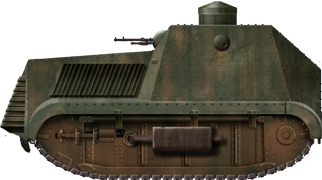
Landesa improvised tank. An improvised tank based on the Landesa tractor. As with many rare Spanish Civil War vehicles, further details are, at best, sketchy.
 Barbastro Tank
Barbastro Tank
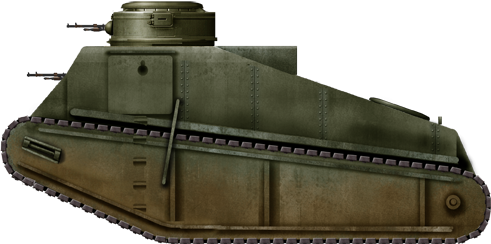
A rendition of the Barbastro Tank. An improvised tank... (to be completed)
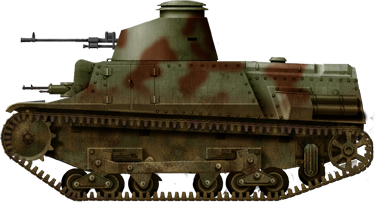
The Carro de Combate de Infanteria Tipo 1937, or infantry Combat Tank type 1937, was a Spanish prototype built by the naval base at Sestao for the Nationalist Forces. Only one prototype was made, armed with an Italian Breda 20 mm (0.79 in) autocannon and twin Hotchkiss light machine guns in the hull.
 UNL-35
UNL-35
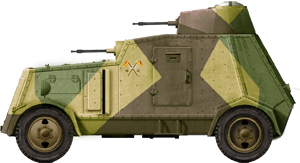
UNL-35 in Republican colors 2nd division armored cars, Barcelona, 1937.
Light armored car. 120-200 produced 1937-1939 in Valencia for Republican forces. Inspired by the FAI or BA-20. Various machine guns such as the DT, MG-08, and MG-13. Many would be captured by Nationalists and probably used until the 50s or 60s.
 AAC-1937 (Chevrolet 6×4)
AAC-1937 (Chevrolet 6×4)
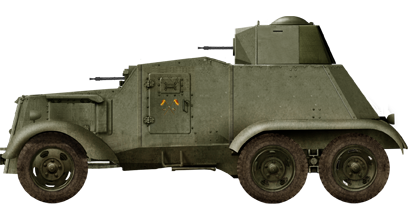
Republican AAC-37 in green livery. Turrets are believed to have just been armed with single machine guns, originally. Others would receive 37mm Puteaux guns.
Heavy 6×4 armored car. 70-90 produced 1937-1939 in Valencia for Republican forces. Inspired by the BA-3/6 and BAI – small differences help to distinguish the AAC-1937 from their Soviet counterparts such as fenders and engine hatches. Armaments varied between production batches. Some had small turrets with MGs, or 37mm guns, others had salvaged Soviet 45mm turrets. Many captured by the Nationalists and confiscated by the French after the retreat north (1939). These would eventually see service in WWII at first with France, but these were captured by Germany and were used on the Eastern Front.
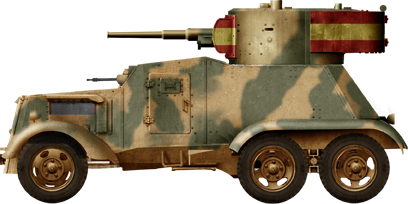
Nationalist captured AAC-37 with a Soviet 45mm gun turret. It is unclear whether these were salvaged from BT-5s, T-26s, or BA-3/6s – possibly all were used.
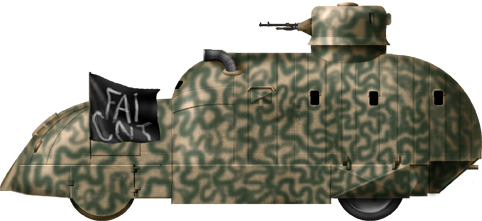
Unknown camouflaged Constructora Field of the CNT-FAI.
Series of improvised armored trucks built in Barcelona using boiler plates. Sen on the Aragonese front. Most featured a single Vickers MG in turret, up to 4 LMG on the sides, 9 men. Used by the Republicans – likely CNT-FAI militia. It featured all the inevitable limitations of improvised gun trucks of the period. One type was on display in San Sebastian in 1938 at the Exposicion de Armas Tomado por el Enemigo (a showcase of captured Republican weapons). Built at the Ferrol naval yard, one turret and 14 pistol ports.
 Mercier II armored car
Mercier II armored car
 Ebro armored car
Ebro armored car
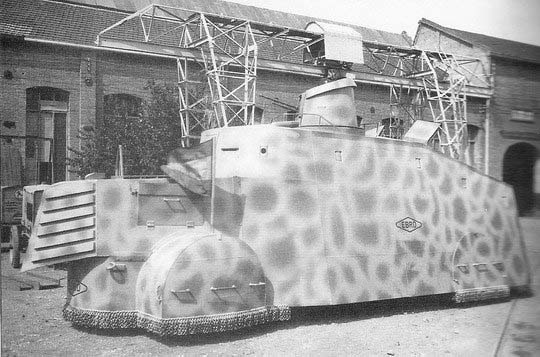
Ebro armored car. One of the numerous used by the Republicans during the Civil War, built in local city workshops, mostly on truck and bus chassis. They were generally characterized by a single turret and many pistol ports, and chains protecting the tires.
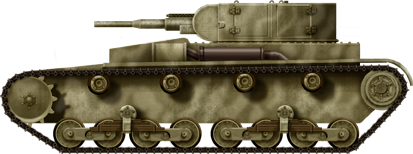
Designed by artillery commander D. Felix Verdeja Bardales, this tank is yet another attempt of the Iberian arm industry to build a small, yet successful tank. With revamped suspension and tracks, the engine relocated to the front, in the right part of the hull, and a small silhouette (only 1.75 m/5.74 ft high), the Verdeja was a difficult target and proved to be very agile in tests carried under operational conditions.
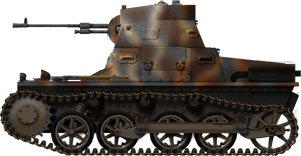
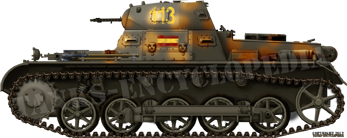
Links/sources
“Los Medios Blindados en la Guerra Civil España: Teatro de Operaciones del Norte 36/37” by Artemio Mortera Pérez“Los Medios Blindados en la Guerra Civil Española: Teatro de Operaciones de Levante, Aragón, y Cataluña, 36/39 1a parte” by Artemio Mortera Pérez.
“Los Medios Blindados en la Guerra Civil Española: Teatro de Operaciones de Levante, Aragón, y Cataluña, 36/39 2a parte” by Artemio Mortera Pérez.
“Los Medios Blindados en la Guerra Civil Española: Teatro de Operaciones de Andalucia y Centro 36/39” by Artemio Mortera Pérez.
“Blindados Españoles en el Ejército de Franco 1936-1939” by Lucas Molina Franco, and Jose Manrique Garcia.
“La Maquina y la History No. 2: Blindados en España: 1a. parte: La Guerra Civil 1936-1939” by Javier de Mazarrasa
“Las Armas de la Guerra Civil: El Primer Estudio Global y Sistematico del Armamento Empleado por Ambos Contendientes” by José María Manrique García and Lucas Molina Franco
“Spanish Civil War Tanks: The Proving Ground for Blitzkrieg” by Steven J. Zaloga
“La Base Alemana de Carros de Combate en Las Arguijuelas, Caceres (1936-1937)” by Antonio Rodríguez González
“Soldiers of Von Thoma: Legion Condor Ground Forces in the Spanish Civil War 1936-1939” by Lucas Molina Franco, José Mª Manrique García, and Raúl Arias Ramos
“Arms of the Spanish Republic, A Nationalist Overview, 1938″ by Lucas Molina Franco, and José Mª Manrique García.“Camion Blindado Bilbao Mod. 1932 “Lanzallamas“.pdf” by Ángel P. Heras.
“AFV Collection No. 1: Panzer I: Beginning of a Dynasty” by Lucas Molina Franco.
“Tout les blindés de l’armée française 1914-1940” by Francois Vauvillier
“Revista policía Armada y de Trafico” (1941-1942)” Ministerio de la Gobernación España.
“Revista Policía”. Artículos de José Eugenio Fernández Barallobre” Ministerio del Interior, 2003-2004.
“Colección de Ordenes generales de la Inspección General de la Policía Armada y de Trafico”, Archivo Histórico del Ministerio del Interior. “Comintern and the Spanish Civil War” by Svetlana Pozharskaya
“The Battle for Spain, The Spanish Civil War 1936-1939” by Anthony Beevor
“A Short History of: The Spanish Civil War” by Julian Casanova
“The Spanish Civil War” by Stanley G. Payne

WW2 Tanks




























WW2 tanks posters

All Tiger tanks liveries.

Panther liveries and variants

WW2 Armour - All tanks











Tanks aces and single tanks series

Find more there

Museums, Movies, Books & Games
The Tanks and Armor in pop culture
Tanks and armored vehicles in general are only really grasped when seen first person: The mass, the scale, it's all there. Explore also the way tanks were covered in the movie industry, in books and in video games.Movies:
Best tanks movie on warhistoryonline.com
On imdb.com
On bestsimilar.com/
miltours.com
liveabout.com/
watchmojo.com
Video Games:
pcgamesn.com
historyhit.com
levvvel.com
vg247.com/best-tank-games
mmobomb.com/
alienwarearena.com
